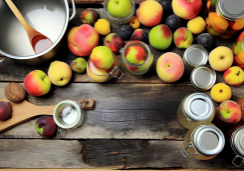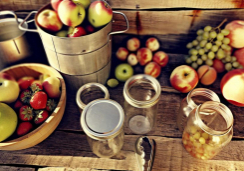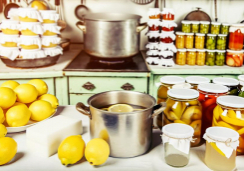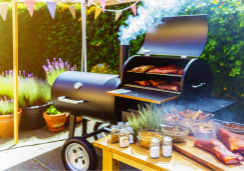Why Isn't Your Homemade Pizza Dough Perfect Yet?
You measure meticulously, knead with dedication, and wait patiently, yet your homemade pizza dough still falls short of that pizzeria perfection you crave. As a seasoned home chef, you've tackled the basics but there's a nuanced art to achieving the ultimate crust – one that's both crisp and chewy, with just the right amount of bubbles and char.
You're not alone in this culinary quest; many factors, from the type of flour to the moisture in the air, can affect the outcome. Could it be the temperature of your water, or perhaps the yeast hasn't been given the royal treatment it demands?
Let's peel back the layers of this dough dilemma to uncover the subtle secrets that can transform your pizza base from merely good to truly great. What could be standing between you and the perfect pizza dough?
Stick around, and we'll explore the less obvious pitfalls and tweaks that might just elevate your homemade pizza to new heights.
Measure Ingredients Precisely
To ensure your homemade pizza dough turns out perfect every time, start by precisely measuring your ingredients with a kitchen scale for consistent results. This is a cornerstone of the best pizza dough recipe, and it sidesteps common pizza dough problems like sticky dough or a crust that's tough instead of tender and airy.
When you weigh your ingredients, you guarantee that the ratio of flour and water is spot on. Remember, too much flour from a heavy-handed scoop can turn your dough into a dense mess. So level off those dry ingredients to avoid unintended excess. For water, always use a liquid measuring cup. Check the level at eye level, not from above, to ensure you're not adding too little or too much. It may seem trivial, but these details can make or break your pursuit of perfect pizza.
Temperature plays a role too. Warm water activates the active dry yeast, but if it's too hot, it can kill it, and if it's too cold, it won't wake it up properly. Aim for room temperature to slightly warm – a cozy environment for the yeast to work its magic. Measure ingredients precisely, and you're well on your way to pizza that rivals your favorite pizzeria's.
Mastering Dough Kneading
Once you've measured your ingredients with precision, the next step in crafting the perfect pizza dough is mastering the art of kneading, which lays the foundation for a stretchy, chewy crust. To knead your dough effectively, press down and forward with the heel of your hand, then fold it over itself and give it a quarter turn. Repeat this rhythmically. The goal is to stretch the dough, developing the gluten network that's key to a pliable, resilient dough.
As you knead, you're on the lookout for common pizza dough problems. If the dough tears easily, it's under-kneaded. Conversely, if it's tough and resistant, you might've overdone it, risking a bready texture rather than an airy pizza masterpiece. It's a delicate balance – like a dance where your hands lead and the dough follows.
When your dough feels smooth and holds its shape, it's time to let it rise. This rest allows the gluten to relax and the dough to rise without tearing. Ideally, you'll use high-protein flour, such as bread flour, to enhance this process; however, all-purpose flour can suffice in a pinch.
After the dough has risen and is properly proofed, it's ready to be shaped and transformed into the pizza of your dreams.
Optimal Fermentation Time
Finding the sweet spot for fermentation time can elevate your pizza dough from good to sublime, as it intricately influences the crust's flavor and texture. The journey to perfect homemade pizza dough is a dance of patience and precision, where fermentation plays a leading role.
Here's why you should pay close attention to dough time:
- Flavor Development: Longer fermentation allows complex flavors to emerge.
- Texture Perfection: Proper fermentation time contributes to a chewy, airy crust.
- Rise Right: A well-fermented dough will have doubled in size, indicating readiness.
- Digestibility: Fermentation breaks down gluten, making the dough easier to digest.
Let the dough sit for the optimal fermentation time, usually between 24 to 48 hours. This window of time works wonders for common pizza dough, enhancing both flavor and texture. As you wait, cover the bowl with a damp cloth or plastic wrap to create the perfect environment for the dough balls to rise.
Once the dough has doubled in size, you'll know the fermentation time has worked its magic. Remember, every batch of homemade pizza dough is unique, so don't be afraid to experiment with the fermentation process to find your dough's best expression.
Achieving Perfect Dough Texture
Mastering the texture of your pizza dough can transform your home-baked pies into a pizzeria-quality experience, with each bite delivering the perfect balance of chewiness and crispness. One of the common causes of pizza dough problems is improper proofing. If your dough is underproofed or overproofed, it can lead to a doughy texture that's just not right. Use a proofing box or cover your dough with plastic wrap in a large dish to ensure it rises perfectly.
If you're facing overproofed dough, reballing it and letting it prove again can be a fix. Conversely, if your dough is sticky, tears easily, or dries out, you might just need a bit of flour. However, be cautious—a heavy hand with the rolling pin can cause the dough to become tough. Instead, gently knead the dough to develop gluten, which gives it elasticity.
Choosing the right flour is also key. Bread flour, with its high protein content, or 00 flour, commonly used in Italian pizzas, can significantly enhance your dough texture. Each type of flour gives a different characteristic to the crust, so don't be afraid to experiment.
Understanding Oven Temperatures
While you're focusing on dough texture, don't forget that the oven temperature plays a pivotal role in achieving that irresistible, perfectly baked crust. Your oven isn't just a box that heats up; it's the arena where the magic happens, transforming your pizza dough at home into a culinary masterpiece.
To ensure your pizza is cooked to perfection, consider these essential points:
- Preheat for Power: Always start with a preheated oven. A hot oven is crucial for a crisp pizza crust, as it needs high temperatures to create that delightful crunch.
- Stone Age Technique: Invest in a pizza stone. It mimics the conditions of a wood-fired oven, evenly distributing heat and giving your pizza that authentic pizzeria texture.
- Temperature Triumphs: Use an oven thermometer. Don't trust your oven's dial; ensure it has reached the right temperature for the style of pizza you're aiming for.
- Baking Sheet Backup: If you don't have a pizza stone, a preheated baking sheet can be a good alternative. It won't be as effective, but it'll still help in achieving a better crust than a cold one.
Frequently Asked Questions
What Is the Trick to Good Pizza Dough?
To make great pizza dough, ensure the water's warm, use high-quality flour, knead thoroughly, let it ferment properly, balance hydration, pick fresh yeast, develop gluten well, adjust salt, and consider sugar and oil roles.
Why Is My Pizza Dough Always Undercooked?
Your undercooked pizza dough may be due to incorrect dough temperature, poor flour type, stale yeast, improper hydration ratio, inadequate kneading, insufficient resting time, uncalibrated oven, unsuitable baking surface, or flawed fermentation and rolling methods.
What Can I Do With Failed Pizza Dough?
You've got failed pizza dough? No worries! Experiment with dough rescue, adjust your kneading techniques, and verify yeast vitality. Consider the hydration ratio, flour types, and the impact of temperature and altitude on gluten development.
Why Is My Pizza Dough Not Taking Shape?
Your pizza dough's shape suffers if gluten development's off; check water temperature, kneading technique, and yeast freshness. Proper fermentation time, dough balling, resting period, and surface dusting—alongside the right flour type—enhance dough elasticity.
Conclusion
So, you've measured every cup and kneaded with care. Remember, perfecting your pizza dough is a dance with time—ferment just right for that airy charm.
Touch is key; aim for a supple, springy texture. And your oven? It's the final judge. Crank up the heat for that crisp, golden hug.
Keep at it! With each spin and toss, you're closer to crafting the ultimate homemade pizza that'll steal the show.
Now, go forth and bake!










